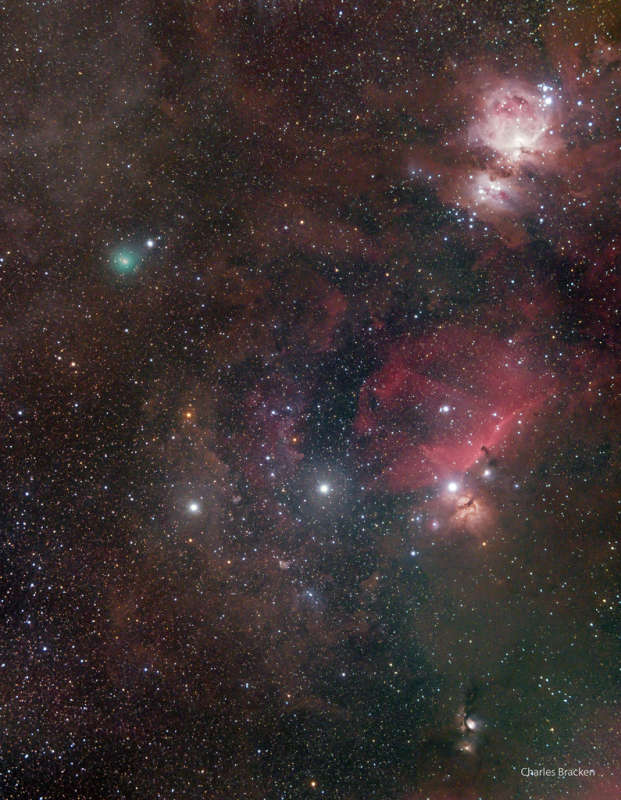
|
Credit & Copyright: Charles Bracken
Explanation:
With its closest approach to planet Earth scheduled for November 14,
this Comet ATLAS (C/2020 M3) was discovered just this summer,
another comet found by the NASA funded
Asteroid
Terrestrial-impact Last Alert System.
It won't get as bright
as
Comet NEOWISE
but it can still be spotted using binoculars, as it
currently
sweeps through the familiar constellation of Orion.
This telephoto field from November 8,
blends exposures registered on the comet with exposures
registered on Orion's stars.
It creates an effectively deep skyview that shows colors and details you
can't quite see though, even in binoculars.
The comet's telltale greenish coma is toward the upper left, above
Orion's three belt stars lined-up across the frame below center.
You'll also probably spot the Orion Nebula, and famous Horsehead Nebula
in the stunning field of view.
Of course one of
Orion's belt stars is nearly 2,000 light-years away.
On November 14,
this comet ATLAS
will fly a mere 2.9 light-minutes from Earth.
|
January February March April May June July August September October November December |
| |||||||||||||||||||||||||||||||||||||||||||||||||||||||
NASA Web Site Statements, Warnings, and Disclaimers
NASA Official: Jay Norris. Specific rights apply.
A service of: LHEA at NASA / GSFC
& Michigan Tech. U.
Based on Astronomy Picture
Of the Day
Publications with keywords: comet
Publications with words: comet
See also:
- APOD: 2025 July 7 Á Interstellar Comet 3I ATLAS
- Comet C/2025 F2 SWAN
- APOD: 2025 February 5 Á Comet G3 ATLAS Setting over a Chilean Hill
- APOD: 2025 February 2 Á Comet G3 ATLAS Disintegrates
- APOD: 2025 January 28 Á Comet G3 ATLAS over Uruguay
- APOD: 2025 January 26 Á The Many Tails of Comet G3 ATLAS
- Comet G3 ATLAS: a Tail and a Telescope
